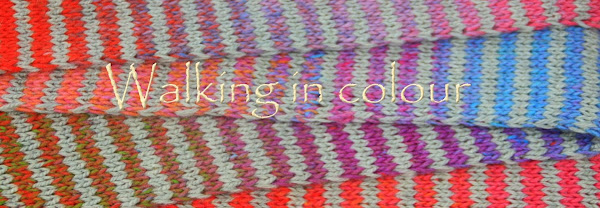I fancied a bit of a change today from writing about practical stuff so I thought that I would do a book review. I will state quite clearly before I start that even though I have included a link to Amazon so that you can have a look inside the book, I do not get paid in any way for doing so.
I think that it is quite common amongst knitters that the method you use to cast on or cast off (bind off in the USA) is the method that you were taught when you first started knitting. This certainly was the case for me, for years amazingly. However, I was getting very frustrated with tight neck openings and untidy rib edgings, and finding that so many patterns included CO/BO methods that I just didn't have a clue how to do. Then, one day, browsing the knitting books on Amazon (as you do, if you are anything like me, and enjoy reading about the craft almost as much as you enjoy actually doing it), I discovered 'Cast On Bind Off, 54 Step-by-Step Methods' by Leslie Ann Bestor, available here. I immediately ordered the book and delayed starting my next project until it had arrived (a true feat of will power).
I have had the book for some time now and I can honestly say that it is one of my most used titles. The small (6"x7") size means that it will fit easily into most knitting bags; whenever I pack my knitting when we are going on a trip, I always pop this book into my bag. It always accompanies me to my knitting group meetings every month.The spiral bound pages mean that the book stays open exactly where you want it to.
I haven't used all of the methods in the book (yet) but I have used quite a few, some have become firm favorites such as the Tubular Cast On and Invisible Ribbed Bind Off, for nice, neat, stretchy ribbing. I was never happy with my Kitchener Stitch grafting until I used the instructions in this book and I think that the main reason for this is that the photo illustrations are very clear and correspond with the text extremely well.
 |
| I used the Tubular CO and Invisible Ribbed BO for this stripey, ribbed scarf. |
 |
| I made this cowl more interesting with a decorative picot CO and BO. |
I will present the pros and cons of this book as bullet points:
Pros
- Compact size makes it very portable
- Spiral binding allow pages to lie flat when open
- Initial contents list allows you to find the type of CO/BO that meets your needs, i.e. basic, stretchy, decorative, circular, double-sided, multicolour, provisional, tubular, mobius and sewn
- There is a small but effective section on basic techniques if you are a beginner knitter
- The beginning of each section has an illustrated list of the methods covered so that you can see at a glance which will be suitable for your project
- Each method is covered in detail with photo illustrations of each step placed alongside the relevant text
- Close up photos show you the front and back of a knitted example of the method and an edge-on view of the finished CO/BO
- Characteristics of the method are listed and possible advantages are given
- The page layout is clear with pleasing printing colours
- At the end of each method there is a 'getting it right' box of text which highlights particular quirks of the technique and how to deal with them
- The index is fairly comprehensive
- The small page size means that some of the more involved methods are spread out over several pages meaning that you have to keep turning the pages as you are working
- The photos don't include arrows to show the direction of needle or yarn manouvre
I'm sure that I could access any of these techniques online but I like the fact that no matter where I am (no internet access for example), I can still start or finish a piece of knitting with minimum fuss. I would truly miss this book if I were to lose it.
I have several bookshelves stuffed with knitting and crochet books so I have a lot of potential material for book reviews. If you feel that this has been helpful then I can make a regular feature of it. Do let me know.
Cheerio for now
